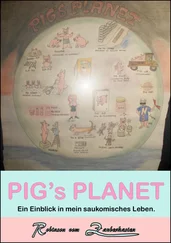By 1935, Müller was already acknowledging in the pages of Der Züchter ( The Breeder ), the main journal of German academic breeders, that “the W-varieties do not constitute a permanent solution” to late blight. [93]Nevertheless, Müller was confident enough to conclude that same article with a grandiloquent statement boasting about his knowledge of the enemy and “the methods with which to wrestle him to the ground.” And apparently the work with the W-varieties had earned Müller enough of a reputation to convince the leadership of the BRA to establish, in 1936, a new branch in Eichhof (Pomerania) dependent of his own Genetics and Breeding Section of the Botany Department. In September 1935, in his plea to the BRA’s director that 110,000 Reichsmarks be spent at the new branch for the acquisition of experimental fields and the building of greenhouses and laboratories, Müller explicitly linked the identification of new strains of Phytophthora infestans with increasing demands on the breeding work. [94]Different pathogen strains implied the multiplication of the inoculation work, which justified the testing of about 12,000 potatoes to begin with. The additional difficulties didn’t sway him from suggesting to the BRA’s director that sooner or later the best W-varieties produced by the BRA’s new department would make their way to the German fields. [95]Confirming Müller’s promises, in 1940 three new Phytophthora -resistant commercial varieties—named Erika, Robusta, and Frühnudel—were added to the Reichssortenlist, followed by Aquila in 1942. [96]The fungus was not to play the same decisive role in World War II that it had played in the previous conflict. [97]
What may have constituted a serious blow to Müller’s research was thus turned into a justification for more resources: more strains of the fungus demanded more testing of breeding lines, leading to new greenhouses, laboratories, and experimental plots. More than that, it led Müller and his team at the BRA to delve deeper into the mechanisms of resistance reactions in potatoes. [98]What hindered the development of Phytophtora infection was first explored by Müller in 1931, when he scrutinized potato specimens through cytological-physiological methods, reaching the conclusion that infected potatoes released some kind of toxic substance to the fungus. [99]Having previously established the existence of a dominant Mendelian factor (the R-gene) responsible for the resistance of the W-varieties, Müller was now interested in its mode of action. Close observation of infected materials of different varieties suggested that the alleles present in the W-varieties induced a predisposition for the host tissues to “acquire” a local immunity from infection when in contact with the hyphae of P. infestans . Comparison of susceptible and resistant potato varieties revealed that in both varieties host cells were destroyed after contacting the protoplasm of the parasite. If morphological and physiological analyses revealed the same final effect, the difference in degree of resistance depended on the rapidity of the reaction. Further penetration of the hyphae was made impossible by the rapid reaction of the host tissue. In other words, Müller established a relation between the degree of resistance and the velocity of the “defense necrosis” reaction of the host tissue. The R-gene controlled the speed of the reaction without changing its basic nature. Much of the work of Müller’s team at the BRA during the Nazi years dealt directly with the exploration of such mechanism. [100]
With the ultimate goal of producing resistant varieties to include in the RNS catalog, thorough tissue analyses were made of extensive breeding materials to determine the sensitivity of different varieties in function of the number of cell layers penetrated by the fungus. The various stages of the defense necrosis were distinguished, the last two being characterized by cell collapse and by heavy infiltration of the fungus. [101]Above, I insisted on the importance of the streamlining of the inoculation procedure in order to have a fast and reliable method of establishing the degree of resistance of hundreds of thousands of seedlings. With the growing number of different fungus strains identified (eight of them by 1936), the case for parallel investigations on the biology and cultivation of the fungus was even stronger. Isolation of P. infestans biotypes and safe separation through cultures on artificial substrates were required so that conclusions about the relation between host tissue and fungus growth could be drawn from the results of controlled experiments. Breeding resistant potatoes demanded not only the transformation of the tuber into a suitable laboratory object but also the careful standardization of its parasites—in this case, the P. infestans fungus.
In 1935, in the same paper in which he conceded that W-varieties constituted not a definite answer to late blight, Müller was already suggesting that resistant plants could act as “inductors” of new biotypes of P. Infestans , with the virulence of the latter influenced by passages through host plants of different grades of resistance. [102]In fact, as Müller would later demonstrate, the necrosis depended less on the absolute reaction rate and more on the relation between the hyphal growth rate and the rapidity of the reaction. [103]Because not only P. infestans but also other microorganisms are unable to exist in the necrotic host tissue, Müller postulated that this localized cell death must be accompanied by the production or activation of a substance he called phytoalexin (‘alexein’ meaning “defense” in Greek). In subsequent years, biochemists would explore this fungicide in depth in order to replace Müller’s functional definition with a structural one. [104]According to Turner, until the 1970s the Phytophthora infestans associated with Solanum tuberosum was the major model organism of plant pathology for studying the general response mechanism of plants against pathogens.
The different combinations of potato varieties, pathogen strains, and inoculation methods constituted generative experimental systems that led to new epistemic objects and the possibility of incorporating new techniques—to use Hans-Jörg Rheinberger’s phraseology. [105]Not only did potatoes have an obvious economic and social relevance in the German context; they also were research objects able to sustain the growing of a vast community of scientists and instruments at the Biologische Reichsanstalt für Land- und Forstwirtschaft. Each research team at the BRA developed a particular experimental system. The team working on plant breeding and genetics (Dienstelle für Pflanzenzüchtung und Vererbungslehre), headed by Karl Otto Müller, concentrated on the W-varieties and Phytophthora ; the team working on agriculture botany (Landwitschaftliche Botanik) concentrated on wart disease. [106]The interest in Solanum demissum that Müller had developed in the course of his work on Phytophthora resistance led to the use of that wild species in the Colorado Beetle work, and the methods used in wart research led to the classification standards developed in the varietal registry section. In other words, the different experimental systems that structured the organizational chart of the BRA were built on resources previously developed by other sections of the BRA.

Figure 3.9 A 1936 organizational chart of the Biologische Reichsanstalt für Land- und Forstwirtschaft.
( Die Biologische Reichsanstalt für Land und Forstwirtschaft in Berlin-Dahlem , Paul Parey, 1936)
The virus group (called the physiologic botany section of the botany department in 1934, and renamed the plant virus pathology section in 1943) was led by Erich Köhler, who had begun his career at the BRA in 1921 doing research on wart disease and then had turned to plant virology in 1932. [107]Köhler was celebrated for having introducing into Germany the notion—already in vogue in the Netherlands and the United States—that viruses were the pathogenic agents responsible for potato degeneration (Kartoffelabbaus), in contrast to ecological theories arguing that potato leaf roll was caused by environmental factors such as water imbalance. [108]In fact, the cause of potato degeneration was, from very early on, a major issue at the BRA, Otto Appel himself having published a leaflet on leaf roll differentiating it from the crinkle of the potato and making no mention of viruses. The concern about degeneration is not surprising. The yields of contaminated fields, according to the BRA numbers, were reduced by between 25 and 50 percent in the first year, and by more than 60 percent in subsequent years. [109]
Читать дальше













